

others
Consumer Price Index increase 3.4% in April as forecast – Crypto News
Inflation in the US, as measured by the change in the Consumer Price Index (CPI), declined to 3.4% on a yearly basis in April from 3.5% in March, the US Bureau of Labor Statistics (BLS) reported on Wednesday. This reading came in line with the market expectation.
The annual core CPI, which excludes volatile food and energy prices, retreated to 3.6% from 3.8% in the same period, matching analysts’ estimate. On a monthly basis, the CPI and the core CPI both rose 0.3%.
Follow our live coverage of the US inflation data and the market reaction.
“The index for shelter rose in April, as did the index for gasoline. Combined, these two indexes contributed over 70% of the monthly increase in the index for all items,” the BLS said in its press release. “The energy index rose 1.1%. The food index was unchanged in April. The food at home index declined 0.2%, while the food away from home index rose 0.3% over the month.”
Market reaction to US inflation data
The US Dollar came under renewed selling pressure with the immediate reaction. At the time of press, the US Dollar Index was down 0.5% on the day at 104.50.
US Dollar PRICE Today
The table below shows the percentage change of US Dollar (USD) against listed major currencies today. US Dollar was the weakest against the Japanese Yen.
| USD | EUR | GBP | JPY | CAD | AUD | NZD | CHF | |
|---|---|---|---|---|---|---|---|---|
| USD | -0.35% | -0.41% | -0.84% | -0.29% | -0.60% | -0.81% | -0.41% | |
| EUR | 0.35% | -0.06% | -0.40% | 0.03% | -0.29% | -0.45% | -0.07% | |
| GBP | 0.41% | 0.06% | -0.35% | 0.11% | -0.20% | -0.40% | 0.00% | |
| JPY | 0.84% | 0.40% | 0.35% | 0.50% | 0.20% | -0.03% | 0.40% | |
| CAD | 0.29% | -0.03% | -0.11% | -0.50% | -0.32% | -0.51% | -0.12% | |
| AUD | 0.60% | 0.29% | 0.20% | -0.20% | 0.32% | -0.21% | 0.22% | |
| NZD | 0.81% | 0.45% | 0.40% | 0.03% | 0.51% | 0.21% | 0.41% | |
| CHF | 0.41% | 0.07% | -0.00% | -0.40% | 0.12% | -0.22% | -0.41% |
The heat map shows percentage changes of major currencies against each other. The base currency is picked from the left column, while the quote currency is picked from the top row. For example, if you pick the US Dollar from the left column and move along the horizontal line to the Japanese Yen, the percentage change displayed in the box will represent USD (base)/JPY (quote).
This section below was published at 03:00 GMT as a preview of the US inflation report for April.
- The US Consumer Price Index is set to rise 3.4% YoY in April, following the 3.5% increase in March.
- Annual core CPI inflation is expected to edge lower to 3.6% in April.
- The inflation report could influence the timing of the Fed’s policy pivot.
The high-impact US Consumer Price Index (CPI) inflation data for April will be published by the Bureau of Labor Statistics (BLS) on Wednesday at 12:30 GMT. Inflation data could alter the market’s pricing about the timing of the Federal Reserve (Fed) policy pivot, while uncertainty regarding the rate outlook grows amid policymakers’ hawkish tone and disappointing macroeconomic data releases. Hence, a surprise in CPI data could ramp up the US Dollar’s (USD) volatility.
What to expect in the next CPI report?
Inflation in the United States (US) is forecast to rise at an annual pace of 3.4% in April, at a slightly softer pace than the 3.5% increase recorded in March. The core CPI inflation rate, which excludes volatile food and energy prices, is forecast to edge lower to 3.6% from 3.8% in the same period.
The monthly CPI and the core CPI are seen increasing 0.4% and 0.3%, respectively, in April.
Several Fed policymakers have recently voiced their concerns over the inflation outlook. Richmond Fed President Thomas Barkin argued that a patient approach to policy would eventually reduce inflation toward the 2% target, while Minneapolis Fed President Neel Kashkari noted that the lack of progress in inflation was raising questions about how restrictive the policy is. Moreover, Fed Board of Governors member Michelle Bowman said that she doesn’t rate cuts as warranted this year, adding that she would like to see a number of better inflation data.
Previewing the April inflation report, “we expect next week’s CPI report to show that core inflation slowed to a “soft” 0.3% m/m pace after posting a third consecutive strong gain at 0.4% in March,” said TD Securities analysts. “The headline likely rose by a softer 0.3% m/m despite another notable gain in energy prices. Note that our unrounded core CPI forecast at 0.27% m/m suggests larger risks for a dovish surprise to a rounded 0.2% increase.”
How could the US Consumer Price Index report affect EUR/USD?
Following the 0.3% increase recorded in January, the CPI and the core CPI rose 0.4% both in February and March, reviving concerns over a slowdown in the disinflationary progress and causing market participants to refrain from forecasting a rate cut until September.
Meanwhile, the BLS reported an increase of 175,000 in Nonfarm Payrolls in April. This marked the smallest growth in payrolls since October and pointed to loosening conditions in the labor market. Other data from the US showed that the business activity in the manufacturing and service sectors contracted in April, with the ISM Manufacturing and Services Purchasing Managers Index (PMI) both coming in below 50. Additionally, the US Department of Labor announced that there were 231,000 first-time applications for unemployment benefits in the week ending May 4, the highest print since early November.
Despite the strong inflation figures seen in the last couple of months, disappointing data releases keep the optimism about a policy pivot in September alive. According to the CME FedWatch Tool, investors are currently pricing in a 35% probability of a no change in the Fed interest rate in September. Hence, the market positioning suggests that the US Dollar faces a two-way risk heading into the inflation data release.
In case the monthly core CPI rises 0.4% or more, it could revive expectations for a policy hold in September. In this scenario, US Treasury bond yields are likely to gain traction and allow the USD to gather strength against its major rivals. On the other hand, a reading of 0.2% or lower could have the opposite impact on the currency’s valuation.
Eren Sengezer, European Session Lead Analyst at FXStreet, offers a brief technical outlook for EUR/USD and explains: “The Relative Strength Index (RSI) indicator on the daily chart stays above 50 but EUR/USD needs to flip 1.0800-1.0820 area, where the 200-day and the 100-day Simple Moving Averages (SMA) are located, into support to extend its uptrend. Above this area, 1.0900 (static level) could be seen as interim resistance before 1.0980 (March 8 high).”
“If EUR/USD fails to clear 1.0800-1.0820 area, buyers could get discouraged. In this case, supports could be seen at 1.0720 (20-day SMA) and 1.0600 (April 16 low, static level).”
Fed FAQs
Monetary policy in the US is shaped by the Federal Reserve (Fed). The Fed has two mandates: to achieve price stability and foster full employment. Its primary tool to achieve these goals is by adjusting interest rates. When prices are rising too quickly and inflation is above the Fed’s 2% target, it raises interest rates, increasing borrowing costs throughout the economy. This results in a stronger US Dollar (USD) as it makes the US a more attractive place for international investors to park their money. When inflation falls below 2% or the Unemployment Rate is too high, the Fed may lower interest rates to encourage borrowing, which weighs on the Greenback.
The Federal Reserve (Fed) holds eight policy meetings a year, where the Federal Open Market Committee (FOMC) assesses economic conditions and makes monetary policy decisions. The FOMC is attended by twelve Fed officials – the seven members of the Board of Governors, the president of the Federal Reserve Bank of New York, and four of the remaining eleven regional Reserve Bank presidents, who serve one-year terms on a rotating basis.
In extreme situations, the Federal Reserve may resort to a policy named Quantitative Easing (QE). QE is the process by which the Fed substantially increases the flow of credit in a stuck financial system. It is a non-standard policy measure used during crises or when inflation is extremely low. It was the Fed’s weapon of choice during the Great Financial Crisis in 2008. It involves the Fed printing more Dollars and using them to buy high grade bonds from financial institutions. QE usually weakens the US Dollar.
Quantitative tightening (QT) is the reverse process of QE, whereby the Federal Reserve stops buying bonds from financial institutions and does not reinvest the principal from the bonds it holds maturing, to purchase new bonds. It is usually positive for the value of the US Dollar.
-

 Technology1 week ago
Technology1 week agoChatGPT users are mass cancelling OpenAI subscriptions after GPT-5 launch: Here’s why – Crypto News
-

 Technology6 days ago
Technology6 days agoiPhone 17 series tipped to cost more than iPhone 16: Here’s how much it could cost in India and US – Crypto News
-
Cryptocurrency1 week ago
DWP Management Secures $200M in XRP Post SEC-Win – Crypto News
-

 Cryptocurrency7 days ago
Cryptocurrency7 days agoXRP gains legal clarity in US after Ripple settles SEC case – Crypto News
-
Business1 week ago
Analyst Predicts $4K Ethereum Rally as SEC Clarifies Liquid Staking Rules – Crypto News
-

 Blockchain1 week ago
Blockchain1 week agoShiba Inu’s Shibarium Is More Than A Layer 2, Expert Reveals What It Is – Crypto News
-
Business1 week ago
XRP Price Prediction As $214B SBI Holdings Files for XRP ETF- Analyst Sees Rally to $4 Ahead – Crypto News
-
others1 week ago
SEC Latest Filing Reveal Ripple Case Win Could Trigger XRP Treasury Boom Like Ethereum – Crypto News
-

 Technology1 week ago
Technology1 week agoHumanoid Robots Still Lack AI Technology, Unitree CEO Says – Crypto News
-
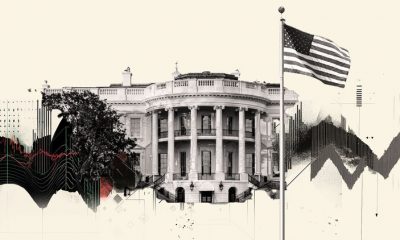
 others1 week ago
others1 week agoUS President Trump issues executive order imposing additional 25% tariff on India – Crypto News
-

 De-fi1 week ago
De-fi1 week agoRipple Expands Its Stablecoin Payments Infra with $200M Rail Acquisition – Crypto News
-
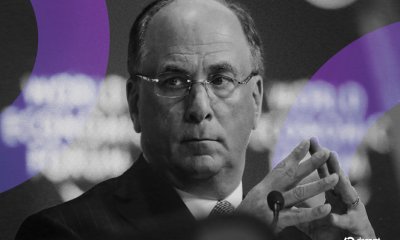
 Cryptocurrency1 week ago
Cryptocurrency1 week agoHarvard Reveals $116 Million Investment in BlackRock Bitcoin ETF – Crypto News
-
others3 days ago
Breaking: USDC Issuer Circle To Launch Arc Blockchain for Stablecoin Payments – Crypto News
-
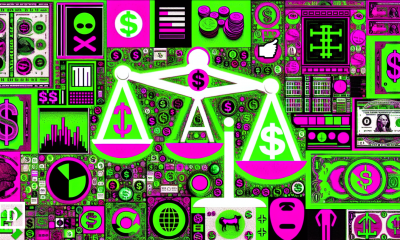
 De-fi1 week ago
De-fi1 week agoSEC Says Some Stablecoins Can Be Treated as Cash, but Experts Warn of Innovation Risk – Crypto News
-

 De-fi1 week ago
De-fi1 week agoCoinbase Pushes for ZK-enabled AML Overhaul Just Months After Data Breach – Crypto News
-
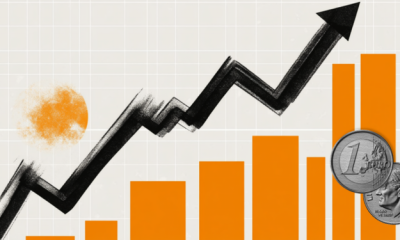
 others1 week ago
others1 week agoEUR firmer but off overnight highs – Scotiabank – Crypto News
-
Business6 days ago
Trump’s World Liberty Financial Targets $1.5B Crypto Vehicle Backed by WLFI Tokens – Crypto News
-
others6 days ago
United Kingdom CFTC GBP NC Net Positions fell from previous £-12K to £-33.3K – Crypto News
-
Technology1 week ago
Shiba Inu Community Turns on Shytoshi Kusama, Says He’s “Unfit To Lead” Amid Elections – Crypto News
-

 Blockchain1 week ago
Blockchain1 week agoTrump to Sign an EO Over Ideological Debanking: Report – Crypto News
-
Business1 week ago
OpenAI Launches GPT-5 Amid Competition From Elon Musk’s Grok – Crypto News
-
Technology1 week ago
Breaking: XRP Lawsuit Ends as Ripple and SEC File Joint Dismissal – Crypto News
-

 others1 week ago
others1 week agoRipple To Gobble Up Payments Platform Rail for $200,000,000 To Support Transactions via XRP and RLUSD Stablecoin – Crypto News
-

 Technology1 week ago
Technology1 week agoHulu app to shut down in 2026 as Disney fully merges platform into Disney+ – Crypto News
-
Technology1 week ago
Trump Removes IRS Commissioner, Pro Crypto Scott Bessent to Serve as Acting Head – Crypto News
-
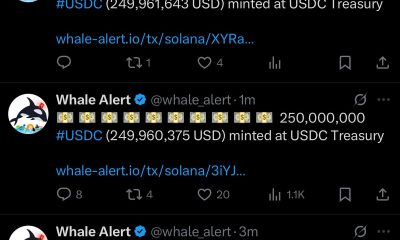
 De-fi7 days ago
De-fi7 days agoCircle Mints About $1 Billion in USDC After Flurry of Treasury Moves – Crypto News
-
others6 days ago
Crypto Adviser Bo Hines Move to AI Role Sparks Concern Over White House Policy Shift – Crypto News
-

 De-fi1 week ago
De-fi1 week agoSEC Says Some Stablecoins Can Be Treated as Cash, but Experts Warn of Innovation Risk – Crypto News
-
Technology1 week ago
Roman Storm Trial: Jury Fails to Reach Verdict on Money Laundering Charge – Crypto News
-
Cryptocurrency1 week ago
Ripple CTO Breaks Silence on Caitlin Long’s ‘XRP ICO’ Misconception – Crypto News
-
Technology1 week ago
Trump Tariffs: U.S. Imposes Another 25% Tariff on India – Crypto News
-
others1 week ago
SEC Commissioner Pushes Back on Crypto ETFs as XRP ETF Approval Odds Sink – Crypto News
-
Business1 week ago
Former Meta, Netflix Engineers Unite to Build a Blockchain For iPhone Like Revolution in Web3 – Crypto News
-
others1 week ago
Just In: Trump to Sign Executive Order Allowing Crypto in 401(k) Plans – Crypto News
-
others1 week ago
Robinhood Lists FLOKI Meme Coin As Market Cap Surpasses $1B – Crypto News
-

 Cryptocurrency1 week ago
Cryptocurrency1 week agoThis Ripple (XRP) Metric Flashes Critical Warning Sign – Crypto News
-
Technology7 days ago
Ripple’s 4-Year Lawsuit Battle with the SEC Ends: Timeline, Turning Points, and the Final Verdict – Crypto News
-

 Cryptocurrency7 days ago
Cryptocurrency7 days agoBTC hovers at $115K; ETF flows turn negative, short-term holder profitability drops – Crypto News
-

 Cryptocurrency5 days ago
Cryptocurrency5 days agoCrypto investors hopeful amid new regulatory orders – Crypto News
-
Business5 days ago
Uniswap Proposes DUNI Legal Entity in Wyoming to Boost DAO Governance – Crypto News
-
Cryptocurrency4 days ago
Trump Mulls Lawsuit Against Powell Amid Fed Rate-Cut Push – Crypto News
-

 Blockchain4 days ago
Blockchain4 days agoStripe Developing Blockchain in Tandem With VC Firm Paradigm – Crypto News
-
Technology2 days ago
99% Approval Odds? How Close Are We to Spot Solana ETF Launch in US? – Crypto News
-

 Cryptocurrency1 week ago
Cryptocurrency1 week agoTop Crypto Coin Prediction: BTC, ETH And TRX Defy Odds – Crypto News
-

 De-fi1 week ago
De-fi1 week agoSEC Says Some Stablecoins Can Be Treated as Cash, but Experts Warn of Innovation Risk – Crypto News
-
others1 week ago
Strategy Could Become Largest U.S. Public Company if Bitcoin Hits $1M: Tom Lee – Crypto News
-

 Technology1 week ago
Technology1 week ago‘The computer will see what we see’: Microsoft outlines bold AI shift in Windows 2030 vision – Crypto News
-

 Cryptocurrency1 week ago
Cryptocurrency1 week agoSEC staff statement on liquid staking may pave way for staking in spot Ether ETFs – Crypto News
-

 Blockchain1 week ago
Blockchain1 week agoXRP Whales Offload $1.9B Putting Price at Risk of Drop Toward $2 – Crypto News
-

 others1 week ago
others1 week agoPlume and Mercado Bitcoin To Tokenize $500M Real-World Assets, Driving RWA Adoption Across Latin America – Crypto News



![Car Group Limited – CAR Elliott Wave technical analysis [Video]](https://dripp.zone/news/wp-content/uploads/2025/05/Car-Group-Limited-–-CAR-Elliott-Wave-technical-analysis-Video-400x240.jpg)
![Car Group Limited – CAR Elliott Wave technical analysis [Video]](https://dripp.zone/news/wp-content/uploads/2025/05/Car-Group-Limited-–-CAR-Elliott-Wave-technical-analysis-Video-80x80.jpg)


![CSX Corp. (CSX) Stocks Elliott Wave technical analysis [Video]](https://dripp.zone/news/wp-content/uploads/2025/02/CSX-Corp-CSX-Stocks-Elliott-Wave-technical-analysis-Video-400x240.png)
![CSX Corp. (CSX) Stocks Elliott Wave technical analysis [Video]](https://dripp.zone/news/wp-content/uploads/2025/02/CSX-Corp-CSX-Stocks-Elliott-Wave-technical-analysis-Video-80x80.png)

